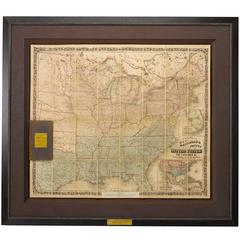F Colton
Recent Sales
Antique 1860s American Maps
Paper
Read More
Patchwork Quilts Are the Latest Nostalgic Design Trend
New or old, the coverlets add old-time charm to any space.
Medal-Worthy Memorabilia from Epic Past Olympic Games
Get into the games! These items celebrate the events, athletes, host countries and sporting spirit.
Ahoy! You’ve Never Seen a Collection of Sailor Art and Kitsch Quite Like This
French trendsetter and serial collector Daniel Rozensztroch tells us about his obsession with objects related to seafaring men.
39 Incredible Swimming Pools
It's hard to resist the allure of a beautiful pool. So, go ahead and daydream about whiling away your summer in paradise.
Pamela Shamshiri Shares the Secrets behind Her First-Ever Book and Its Effortlessly Cool Interiors
The sought-after designer worked with the team at Hoffman Creative to produce a monograph that beautifully showcases some of Studio Shamshiri's most inspiring projects.
Moroccan Artworks and Objects Take Center Stage in an Extraordinary Villa in Tangier
Italian writer and collector Umberto Pasti opens the doors to his remarkable cave of wonders in North Africa.
Montecito Has Drawn Royalty and Celebrities, and These Homes Are Proof of Its Allure
Hollywood A-listers, ex-pat aristocrats and art collectors and style setters of all stripes appreciate the allure of the coastal California hamlet — much on our minds after recent winter floods.
Whaam! Blam! Pow! — a New Book on Pop Art Packs a Punch
Publishing house Assouline and writer Julie Belcove have teamed up to trace the history of the genre, from Roy Lichtenstein, Andy Warhol and Yayoi Kusama to Mickalene Thomas and Jeff Koons.
